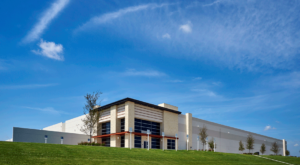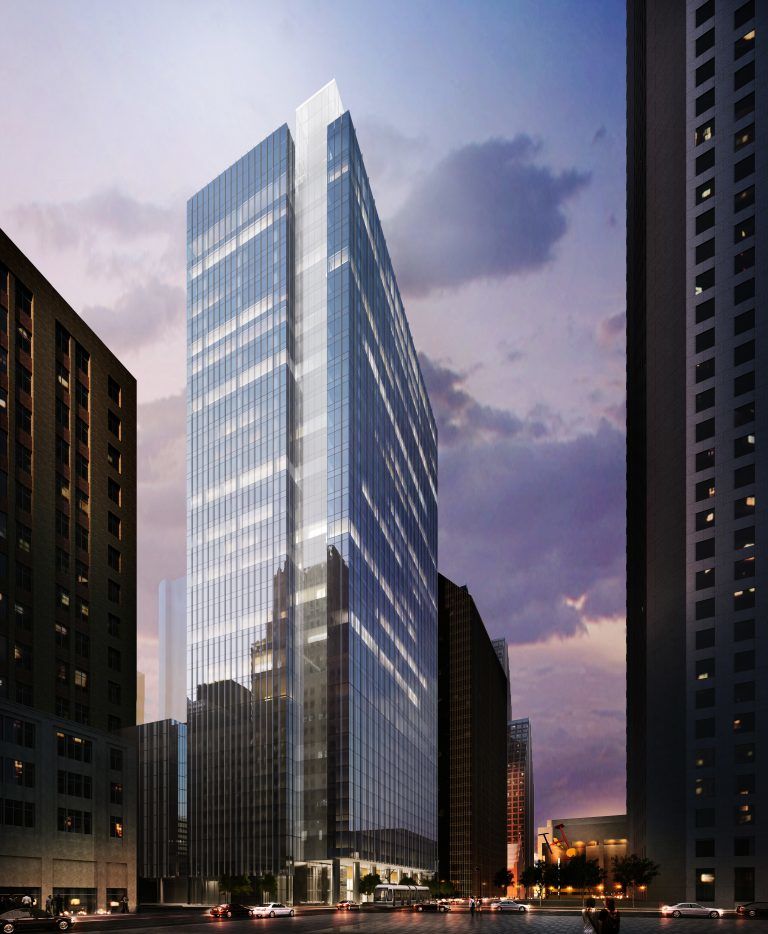continued…
HOUSTON: Earns Hub Status
“The biggest change to Houston in the past 24-36 months (and even longer though less pronounced) has been dealing with supply chain and logistics,” says JLL’s John Talhelm, senior vice president and national director.
Every company’s logistics formula differs, however, which affects where they perceive the best location to optimize the last mile, meaning getting product to consumer once it has already landed. Houston’s southeast and northwest submarkets are particularly in demand by those preferring to be near their goods’ point of entry or closer to their end-users.
Meanwhile, those who operate in supply chain management appear to have changed their approach to Talhelm observes: “Houston is now a regional distribution center.”
With the opening of the new Panama Canal, the Port of Houston is helping drive that new role, Talhelm says. Shipping direct from China to Houston lands goods in a high population center with access to others (totaling an estimated 50 percent of the state population) within a 4- to 4 ½-hour drive.
With federal regulations limiting drive-times for truckers, an optimal distance traveled within shift is about four hours, long enough to reach and return from San Antonio and Austin, Corpus Christi and Beaumont.
In review of 2017, the vacancy rate has remained at or below 5 percent. It’s currently 4.9 percent, JLL’s “US Industrial Outlook” reports, with availability following suit at 8.9 percent.

Developers are responding to continued demand for distribution-style space with new construction: 4.5 million SF is currently under construction, of which 37.9 percent is pre-leased.
“To the credit of lenders and developers,” there has been an even rate of space delivered to match demand, quarter by quarter, Talhelm says. “In my opinion, this (even pairing) is a win for developers and for tenants. Developers get predictability on their investment and tenants get stability of lease rates, which helps in their long-term planning.
Interest is increasing from institutional and foreign investors, with deal volume up for the year, the JLL Outlook also indicates. Examples include Pure Industrial REIT’s two-warehouse acquisition in Cedar Port Industrial Park from Clay Development; Prologis’ warehouse acquisition in the West by Northwest Industrial Park from TIAA-CREF; and Hines’ acquisition in La Porte of the five-building Underwood Distribution Center from Black Rock, which it rebranded as Independence Logistics Park..
In usage, four categories, particularly in the past two quarters, account for 56 percent of the overall industrial use, Talhelm notes:
- Food & beverage
- Durable goods
- Building materials
- Paper & packaging
Some of this activity is a reflection of recovery from Hurricane Harvey, he says, since industrial space was not damaged by the storm in late August 2017. In the aftermath, several new leases have been in direct response to supporting recovery in the region. Home Depot, for example, inked a 300,000 SF lease in 3Q. While recovery-support leasing activity is likely to continue into 2018, “It’s hard to predict the length of the challenge” Houston faces.
Other players expanding their presence and footprints include Best Buy, Amazon, Walmart, Daikin and Ikea.
Looking to 2018, Talhelm expects these trends to continue, including construction of projects exceeding 500,000 SF that cater to e-commerce.
SAN ANTONIO: Steady and Adding Yards
Compared to the larger and diverse industrial markets of Houston and Dallas/Fort Worth, San Antonio activity is “pretty basic, with steady growth. It’s solid,” say Jason Schnittger, managing director at Stream Realty and Michael T. Kent, vice president, tenant rep and acquisitions.
The completion and delivery of 1 million SF in 2017 has affected the market’s vacancy rate, now at 10 percent for third-party properties, Schnittger says, which is about double that of a year ago for the estimated 40 million SF. The vacancy dynamic, however, means a more balanced market, he says. Previously, it was “landlord friendly.”
Among the 2017 deliveries: Stream Realty’s 400,000 SF I-35 Logistics Center near New Braunfels; Robinson Weeks Partners’ Enterprise III 360,000 SF in Shertz; and EastGroup Properties’ completion of two buildings totaling 160,000 SF in Eisenhauer Point.
Existing and new tenants are seeking the most functional of space, Schnittger says. That means high ceiling clear heights, plenty of truck parking, an abundance of high docks, optimal column spacing and ESFR sprinklers. “Tenants will pay top-of-market rent for top amenity, top functional properties,” he says.
The average rate for new Class A bulk space is approaching $5 psf, “something new for this market,” notes Kent. Older properties, with their narrow truck courts, limited truck ports and advanced ages — 30 to 50 years — are not leasing as well, even though they’re offered at a lower price point.
For Class B industrial space stuck between the Super A fully loaded properties and the older, obsolete properties now attracting redevelopment — if they are located well — “Landlords must decide how to differentiate,” whether it is by price, adding ESFR sprinklers or improving aesthetics, he says.
Also affecting inventory, though slightly, is the repurposing of well-located older and obsolete properties around the central business district into office, retail and flex space with live-work-play amenities. Mid-town and east of Broadway (near the Pearl or Houston Street) is doing quite well, he says.
And what of the less desirable obsolete industrial space? Given the consumer, there’s always a need to store things. Somewhere. “Even an old, dirty warehouse location can have use, though it might take longer to lease it,” Kent says.

Development is pushing out farther for available, accessible land that’s priced well to accomplish the same investment goals, Schnittger says. Whereas in the past the I-410/I-10 interchange was the edge of the market and the I-35 corridor particularly attractive for trucking goods, more recent projects are also seeking less congested locations that enable serving corridor growth, with facilities in San Marcos and New Braunfels, or on San Antonio’s east side to claim status as the first stop from Houston.
Examples in 2017 include TJ Maxx, 1.5 million on the south side (to be near labor, Kent explains); Carrier, 800,000 SF, also on the south side; and Amazon, 1.2 million SF in Shertz.
While spec industrial attempts to anticipate the most common functions, it can’t go too far out on a limb in new developments, Kent says. Still, these properties are boosting trailer storage and parking that can used by trucks or for employee parking since e-commerce distribution is more labor intensive than other forms of industrial use.
In San Antonio’s market, the yard concept is catching on, meaning storage that’s fenced but not contained, so it’s good for storing goods without height issues. That’s something of note for building materials providers but also the oil and gas equipment suppliers that the Eagle Ford shale development has prompted.
Another trend of 2017: users-as-buyers. “Growing companies that might have leased in the past now want to own their building,” Kent says. The supply is now low.
Looking to 2018, Schnittger says, “We think the effect of e-commerce isn’t going to change any time soon…The ‘Last Mile’ concept of supply chain/logistics is behind a lot of this.”
DALLAS/FORT WORTH: D is Dallas for Distribution
E-commerce remains the “needle-mover” in the D/FW market’s absorption numbers (as with all other major U.S. markets), says CBRE’s Steve Trese, senior vice president.
The region’s growing population, company relocations, strong economy and developable sites continue to feed the market’s increasing aggregation role in bulk distribution.
Put simply by Trese: “More jobs mean more people means more stuff needed.”
The top five deals (tracked through early December 2017) totaled nearly 5 million SF and were either consumer goods, direct to consumer e-commerce, or 3PL companies, he says. Direct e-commerce user Wayfair.com, for example, completed a lease for an 875,000 SF build-to-suit with Duke. Ancillary service providers are also active because of e-commerce activity: UPS, for instance, leased 1 million SF.
In the past five to 10 years, Dallas has boosted its role as an aggregation market for bulk distribution, company research indicates.
Another market factor: Let’s call it “the effect of the sophisticated e-commerce user”—and the impact that is having on distribution activity by other users in the market — or coming to the market — in how they locate, operate, and handle their logistics and employment.
What’s changing? Including amenities inside the industrial box. Air conditioning, for example. With heated competition for labor to work within these large facilities, Trese says, “We are seeing other large warehouses having to add amenities.”
CBRE Dallas market research indicates that 72.8 percent of the 56.2 million SF in deliveries tracked since 2015 were scaled 250,000 SF or larger. (And looking back a decade, to when e-commerce was not a factor, Trese notes, warehouse footprints have more than doubled, with the largest expansions coming to metro areas with big populations.)
Not all the distribution play is at the mega-scale end of the market, however. “There’s a lot of middle level e-commerce. Some are niche industries, but it’s pretty much across the board.” Also, smaller users and the mom-and-pops who might have been in 10,000 SF are looking at growing into 30,000 SF, and the 50,000 SF user is looking at 100,000 SF, he says.
And users are more interested in leasing than owning, Trese says, particularly as they become more sophisticated in their operations.
While most D/FW warehouses are sticking to pure distribution, omni-channel retail users (such as home furnishings and car part suppliers) are also using warehouse space for traditional retail store support and e-commerce fulfillment, according to Miller Hamrick, CBRE industrial research coordinator.
Meanwhile, proximity to the major population base is bringing second life to some infill locations, Trese adds, particularly in providing last mile distribution for quick delivery.
Shopping malls, for example, might see some new life if repurposed or replaced with industrial use given their logistics-friendly locations of good access, Hamrick says. An example is the former Six Flags Mall site, slated for a two-building 1.4 million SF industrial complex by Northpoint development.
JLL’s Craig Jones, managing director, says the D/FW market in 2017 shaped up pretty much as forecasted a year ago, meaning 2017 was like 2016, though slightly lower in absorption due to significant deliveries this year (nearly 20 million SF), and more in the pipeline in terms of space and users.
The average vacancy rate slipped slightly to 7.3 percent through Q3. “There’s no reason to be concerned,” he says. “The healthy market will accommodate it…and with landing two or three significant deals we should get sub 7 percent again.” Plus, deliveries are slowing down a little.
Any lag time will have no long-term effect on vacancy in the most historically active submarkets, according to JLL’s outlook report.
And while the South Dallas submarket’s vacancy rate is highest, that also means it has the highest opportunities, so “tenants are circling,” he says.
“There is still opportunity within traditional submarkets,” he says. However, quality sites are dwindling.
“If there’s a new frontier, it’s McKinney,” where some speculative and build-to-suit users are now scoping out sites. They’re following the rooftops, he says, as regional population has migrated beyond Plano, Frisco and Allen. “We’ve been discussing McKinney (opportunities) for several years,” he says. “It’s not a matter of ‘if’ but ‘when.’”
In 2017, which Jones described as “just normal activity,” there were no curve balls, either pleasant or unpleasant. “No submarket lost its luster.” Looking to 2018, he expects distribution activity will continue to be generated by the region’s hub infrastructure, economic engines that are attracting both new and relocated operations, business-friendly jurisdictions and labor force. The latter is not just a D/FW factor, it’s a challenge nationally, he says.
If a year ago the 2017 forecast expected a repeat of 2016’s “healthy with good activity,” 2018 is looking like a repeat of the repeat, Jones says.
Like many in the industrial market, he calls that continuation “momentum.”




